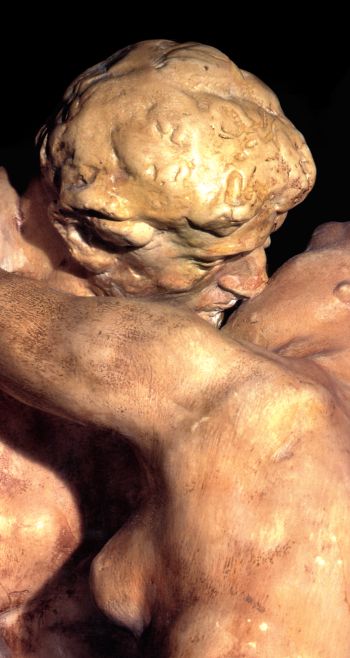H. de Roos - Towards a catalog of the Maclaren collection |
|
|
Casting Histories Of Specific Works: A Framework For Research The next day, after some short comments from my side, David Schaff´s letter was followed by another, linking the information from the physical state of the plasters - as documented by the conservation report - with the casting histories of single sculptures: Dear Hans - your comments are fine. (...) Now, for
answers to some of your larger questions, Although there are no tests which absolutely confirm the
dates of plaster, the surfaces often reveal age. (That's vague but a
start.) For each of the works you must examine carefully for Now, put this conclusion aside for a moment and compare
the surfaces for the Age of Bronze - small or large (not middle) - and the
large Hand of God. Not only does the latter seem remarkably fresh, it's
surface shows little of the very small flaws, repairs, stains, drying
lines and other features of the Age. The large Hand is both quite uniform
and quite undefined in surface. |
|
|
If you pursue these examinations for each piece you will find that 2/3 to 3/4 of the MacLaren plasters date from the same general period. This integrity becomes more evident once you remove the few pieces whose condition is mediocre or poor - the Idyll, the Large Thinker, and the smallest Kiss (a cast-out item). The next test is to go back to the pieces or the
photographs and to compare items closely again, then to go to the
literature - particularly Tancock. My examinations of this kind - one eye
always on the object, the other on the pertinent data - led me to separate
the works which are lifetime from plasters probably achieved for Cantor/MR
casts - specifically, the small Hand of God, the Hand Holding a Female
Torso (notice that these have almost exactly the same copybook precise
signature) and perhaps the Eve on the round base. All three documented as
being cast for MR by Georges Rudier, the Eve on round base because (in
part) an edition of medium Eve on square base So back to your kitchen: if you want to push the core of the MacLaren plasters up to the fifties, you must propose a logic for their manufacture. In that logic you must account for the fact that plasters were almost without value until their re-evaluation by Elsen and Steinberg. Therefore the makers of such plasters would have found no market (prices for Rodin plasters, as far as I know, were very modest until the 1990's). |
|
|
Alternately, did MR require fresh plasters for new or
completed editions? Why? The funds for the immense program of posthumous
castings did not become available until Cantor provided the bankroll in
the mid 60's and later. Even stretched - which it should not be - the
scientific data will not permit a dating of the core of the MacLaren
plasters to this period. Also, if you check the roll of the Cantor casts,
you will find the forms of the MacLaren plasters generally absent. The
only conclusion which has common sense about it is that these plasters
were pre-existent to the programs of the sixties, seventies, and beyond.
The plasters had remained in the storage of the Rudiers from the period
1900-1915. This fact is not unknown to the MR: it was precisely this Finally, lets go back to confirmation and casting
histories. You know by now the history of Eve - large and square base lifetime, round base probably Georges - and similar chronologies may be developed generally for the Age of Bronze - only the 101 cms version seems to have been kept in production after 1920 (then the 101 cm and full scale cast in bronze in the 90's by Hain) - and for the Torso Morhardt, reductions of the Burghers, editions of The Kiss, und so weiter. Here the conclusion is more a feeling than one with precisely documented logic - but when you match up the Alexis Rudier casts, the references in Grappe, the collections records (take Tancock first), the confirmation of these works to documented plasters, and other factors, it becomes far more likely that these plasters relate to these clusters of activity than to any other. Size and detail confirmation are very important because
there were and continue to be unscrupulous, inaccurate editions. These are
fakes and reproductions. Often the plaster for these items are smaller and
less defined because they have been taken by making a latex mold on an
original bronze (surmoulage). To access these, an unorthodox but
effective way is to I have at long last addressed your questions as well as I may in this format. So, happily I wish you a good new year and assure you that I will get to the essay soon. David [From: Letter from Dr David Schaff to the author, 28 Dec. 2001]
|
|
